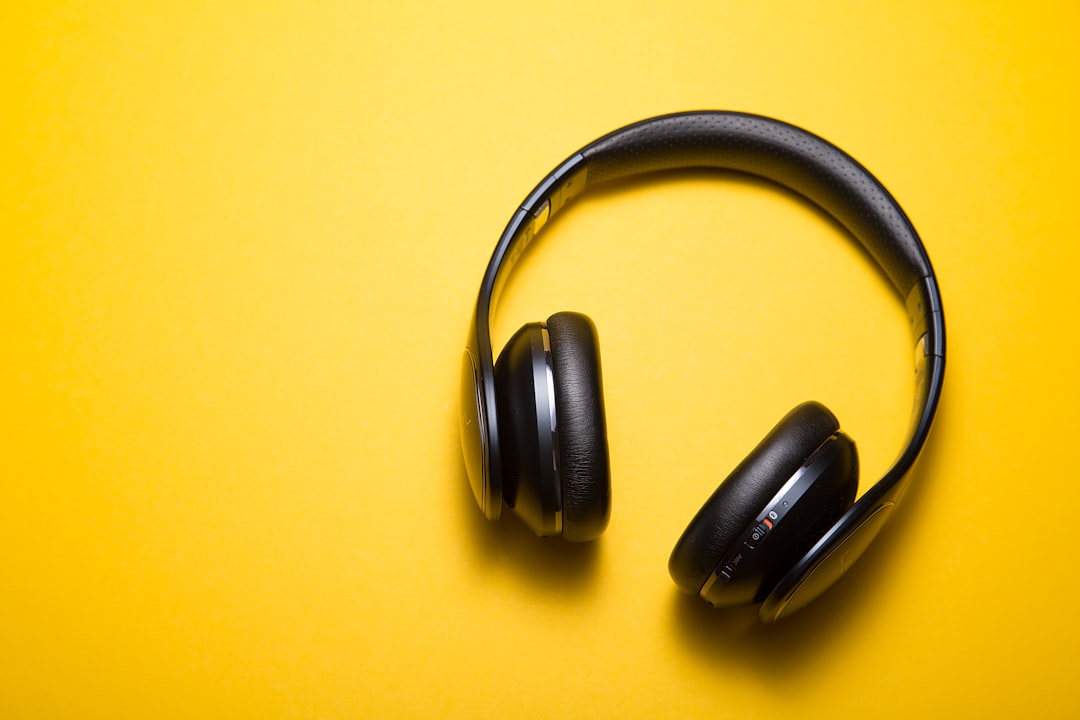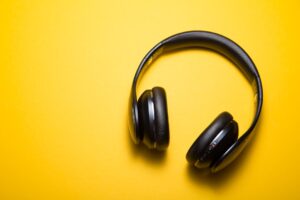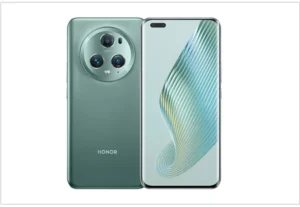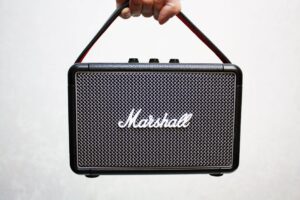Best Headphones for Audiophiles Under 100: 7 Top Picks 2025
Audiophile Sound on a Budget: Is It Possible?
The best headphones for audiophiles under 100 dollars have become surprisingly good in recent years. You don’t need to break the bank for quality sound anymore.
Here are the top audiophile headphones under $100 for 2024:
- Superlux HD 681 – Best overall audiophile sound quality (8.3/10 neutral sound score)
- AKG K240 MK II – Best studio reference ($80, industry standard for decades)
- Audio-Technica ATH-M40x – Best closed-back build quality
- Koss Porta Pro – Best portable audiophile option
- Anker Soundcore Life Q30 – Best wireless with ANC (44 hours battery)
The audio world has changed dramatically. What was once elite technology reserved for $300+ headphones has trickled down to the budget segment. Thanks to manufacturing advances and the rise of Chinese Hi-Fi (ChiFi), audiophile sound has become democratized.
As an audio reviewer who’s tested hundreds of headphones, I’m constantly surprised by what’s possible in this price range. The gap between premium and budget has narrowed significantly.
That said, you still need to know what to look for. Not all sub-$100 headphones are created equal. Some deliver authentic audiophile experiences while others just look the part.
The best budget audiophile headphones balance sound quality, comfort, and durability without breaking your wallet. They might compromise on premium materials or extra features, but they don’t compromise on what matters most: sound reproduction.

What Defines an ‘Audiophile’ Headphone Under $100?
Ever wondered what makes a headphone truly “audiophile quality” without breaking the bank? It’s not about flashy packaging or celebrity endorsements—it’s about sound that respects what the artist intended you to hear.
True audiophile headphones, even budget ones, focus on accuracy above all else. They aim to reproduce music as faithfully as possible, without artificially pumping up the bass or making everything sound “exciting” at the expense of accuracy.
When I’m looking for the best headphones for audiophiles under $100, I’m searching for models that nail these key qualities:
Neutral sound signature that presents music as it was recorded—balanced lows, clear mids, and detailed highs without artificial coloration. Think of it as the difference between hearing music through a clean window versus stained glass.
Wide frequency response covering the full human hearing range (20Hz-20kHz) without significant drop-offs. This means you’ll hear both the deepest bass notes and the airiest cymbal shimmers.
The ability to reveal subtle details in recordings you might miss on consumer headphones—like fingers sliding on guitar strings or a vocalist’s breath between phrases.
Accurate imaging that places instruments and vocals precisely where they should be in the soundstage, creating that “you are there” feeling during listening sessions.
Low distortion that keeps sound clean even when you crank the volume (though please protect your hearing!).
Decent build quality that won’t fall apart after a few months of regular use, even if it’s not premium-grade materials.
At this price point, most solid audiophile headphones feature 40-50mm dynamic drivers, impedance between 32-80 ohms (with some exceptions reaching 250-300 ohms), and sensitivity around 95-105 dB/mW. They typically focus on sound quality rather than extra features.
For a deeper dive into what these specifications actually mean for your listening experience, check out our guide on Understanding Audio Specs.
Can You Really Get Audiophile Sound for Under $100?
Yes, you absolutely can—and the good news is that the gap between budget and premium is shrinking every year.
I’ve tested headphones costing $50 that outperform models from just five years ago that cost $200. Several factors have made this audio revolution possible:
Trickle-down technology has brought yesterday’s flagship innovations into today’s budget models. The dynamic driver in your affordable headphones might be remarkably similar to what was in premium cans a generation ago.
Chinese audio innovation (often called “ChiFi”) has completely transformed the budget audio landscape. Companies like Superlux, KZ, and Moondrop have proven that excellent sound doesn’t require a premium price tag.
Many affordable headphones benefit from studio heritage designs. Take the AKG K240 MK II—this $80 pair has been a recording studio standard for decades. It doesn’t need fancy marketing because sound engineers have trusted it for years.
Consider the Superlux HD 681, which achieved a neutral sound score of 8.3/10 in professional testing, outperforming many headphones costing three times as much. That’s the power of modern budget audio done right.
Of course, let’s keep our real-world expectations in check. Sub-$100 audiophile headphones typically use more plastic than metal, offer basic rather than premium padding, include fewer accessories, and might not have the absolute refinement in the highest and lowest frequencies that $300+ models provide.
But for critical listening on a budget? Today’s options are remarkably capable, offering sound quality that would have cost several hundred dollars just a decade ago. The golden age of affordable audio is definitely here.
Best Headphones for Audiophiles Under $100
After testing countless models, I’ve finded some incredible gems that deliver authentic audiophile sound without breaking the bank. The best headphones for audiophiles under 100 dollars balance sound quality, comfort, and durability—with sound quality taking priority, of course.
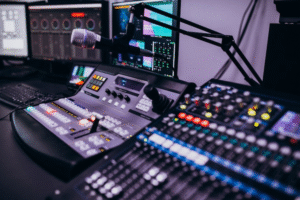
Closed-Back Over-Ear Champions
If you’re looking for versatile headphones that provide isolation while delivering punchy yet balanced sound, closed-backs are your friend.
The Audio-Technica ATH-M40x ($99) has earned its reputation as a budget audiophile staple. With its wonderfully flat frequency response (15Hz-24kHz) and 40mm drivers with rare earth magnets, it reveals details in your music you might have missed. I love that it includes both straight and coiled detachable cables—a premium touch at this price point. The foldable design makes it surprisingly portable for studio-grade headphones, and at 35 ohms, your phone can drive them without issues.
What’s interesting is that many audiophiles actually prefer the M40x over its more popular sibling, the M50x. Why? The M40x offers a more neutral, less colored sound signature that purists appreciate.
The AKG K361 ($99) represents a more modern take on studio headphones. Its 50mm drivers deliver an impressive 15Hz-28kHz frequency range with a slightly warmer bass response than the ATH-M40x. At just 219g, these are noticeably lighter on your head during marathon listening sessions. The swiveling ear cups and foldable design make them practical for on-the-go use, though the build doesn’t feel quite as tank-like as the Audio-Technicas.
For the most analytical listening experience, the Shure SRH440 ($99) stands out with exceptional midrange clarity that makes vocals shine. The unique locking mechanism on its detachable cable provides extra durability—a thoughtful touch for a budget model. At 44 ohms, they’re still easy enough to drive from most devices. Just be aware that the headband can feel a bit tight during longer sessions, though the sound quality might make you forget about that.
These three models are often called the “golden trio” of sub-$100 closed-backs, each with its own character but all delivering genuine audiophile-grade sound.
Open-Back & Semi-Open Soundstage Kings
For a more spacious, natural sound at home, open-backs deliver an experience that closed models simply can’t match.
The Superlux HD 681 ($30-40) is perhaps the best audiophile value on the planet. Despite costing less than a nice dinner, these semi-open headphones received a neutral sound score of 8.3/10 from RTINGS—outperforming models costing three or four times as much. The 50mm neodymium drivers deliver a wonderfully wide 10Hz-30kHz frequency response with impressive detail. Yes, the build quality reflects the budget price, but the self-adjusting headband is comfortable, and the sound quality is legitimately stunning for the price.
The legendary AKG K240 MK II ($80) has been a recording studio staple for decades, and for good reason. Its semi-open design strikes a beautiful balance between soundstage width and practical usability. The unique 30mm XXL transducers with patented Varimotion diaphragm deliver exceptional midrange detail and imaging. I particularly appreciate the self-adjusting headband during long listening sessions and the inclusion of both straight and coiled cables.
The Philips SHP9500 ($75) has developed something of a cult following among budget audiophiles. These fully open-back headphones offer perhaps the most expansive soundstage in this price category—you’ll hear details floating in space around your head rather than inside it. The 50mm neodymium drivers deliver exceptional clarity, especially in the mids and highs, though bass is naturally less emphasized than in closed models. The standard 3.5mm detachable cable is a convenient touch, allowing for easy replacement or upgrades.
Just remember that open-backs leak sound both ways—your roommates will hear your music, and you’ll hear their conversations. They’re best enjoyed in quieter environments where their airy presentation can truly shine.
Wireless & ANC Workhorses
While traditionalists might scoff, today’s wireless options can deliver surprisingly good sound along with the convenience modern life demands.
The Anker Soundcore Life Q30 ($80) has completely changed what we can expect from budget wireless headphones. With hybrid active noise cancellation featuring three specialized modes (Transport, Indoor, and Outdoor), these adapt to different environments impressively well. The 40mm drivers carry Hi-Res certification, and the battery lasts a whopping 44 hours with ANC enabled.
What makes these special for audiophiles is the companion app’s EQ capabilities—while the default tuning is bass-heavy, you can easily dial in a more neutral profile. The memory foam ear cups make long listening sessions comfortable, and the included travel case is a nice touch. For wireless convenience that doesn’t completely sacrifice sound quality, these are hard to beat. You can find them on Amazon here.
The Sony WH-CH520 ($60) brings Sony’s audio expertise to an affordable price point. With an incredible 50-hour battery life and DSEE upscaling to restore detail to compressed audio, these on-ear headphones deliver surprising performance. The multipoint connection lets you stay connected to both your laptop and phone simultaneously—a feature usually found in much pricier models. While not explicitly marketed to audiophiles, their balanced sound signature with Sony’s trademark midrange clarity makes them worthy contenders.
For a more portable option, the JBL Tune 660NC ($99) combines active noise cancellation with a fold-flat design. The 32-hour battery life with ANC on is respectable, and the fast charging (5 minutes for 2 hours of playback) is a lifesaver when you’re rushing out the door. The sound signature is slightly V-shaped—more exciting than strictly neutral—but with good detail retrieval and a lively presentation that works well across genres.
For the best wireless listening experience, use the highest quality Bluetooth codec your device supports (AAC for iOS, aptX/LDAC for Android) and keep your headphones charged to avoid the compression that can occur at low battery levels.
In-Ear Monitor Hidden Gems
Don’t overlook IEMs—these tiny wonders often outperform full-sized headphones at similar prices.
The Moondrop Aria ($80) has become the benchmark for audiophile IEMs under $100. Its 10mm dynamic driver with LCP diaphragm delivers a beautifully balanced sound signature that closely approaches the Harman target curve favored by many audio experts. The metal construction feels premium in hand, and the detachable 2-pin cables allow for future upgrades. With their excellent isolation and 32-ohm impedance, these deliver audiophile sound you can take anywhere.
The Tin HiFi T3 Plus ($70) offers a slightly different flavor with its exceptionally clear, detailed presentation. The 10mm LCP dynamic driver resolves impressive detail for the price, with instrument separation that rivals much more expensive models. The aluminum alloy shells not only look premium but also provide durability for daily use. The MMCX connectors for the detachable cables create a secure connection while allowing for customization.
For an absolute budget miracle, the KZ ZSN Pro X ($25) punches ridiculously above its weight class. The hybrid driver configuration (10mm dynamic + balanced armature) delivers energetic sound with both impactful bass and crisp treble. Yes, the V-shaped signature isn’t strictly neutral, but the technical performance at this price point is remarkable. The metal faceplate with resin body looks far more expensive than it is, and the detachable 2-pin cables add longevity.
IEMs offer several advantages for budget audiophiles: superior isolation from external noise, high sensitivity that eliminates the need for an amplifier, ultimate portability, and often better price-to-performance ratio than over-ears in this range.
Use-Case Winners at a Glance
Different situations call for different headphone strengths. Here’s my quick guide to the best options for specific scenarios:
For music production and mixing, the Audio-Technica ATH-M40x is my top pick with its accurate frequency response. The Sony MDR-7506 has been an industry standard for decades for good reason, while the AKG K240 MK II excels with midrange detail that makes vocal editing a breeze.
Gamers should consider the Philips SHP9500 for its wide soundstage that helps you pinpoint enemy locations. The Superlux HD 681 offers excellent imaging with enough bass impact for explosions, while the JBL Quantum 100 adds a gaming-focused design with a decent microphone.
For commuting and travel, the Anker Soundcore Life Q30‘s effective ANC and long battery life make it the clear winner. The lightweight Sony WH-CH520 is wonderfully portable, while the classic Koss Porta Pro offers surprising sound quality in an ultra-compact design.
When it comes to work calls, the JBL Tune 760NC shines with excellent microphone performance. The Anker Soundcore Life Q30 balances clear call quality with ANC to block office noise, while the Audio-Technica ATH-M20xBT provides reliable connection with good voice pickup.
For pure audiophile listening at home, nothing beats the expansive soundstage of the Philips SHP9500. The Superlux HD 681 delivers exceptional detail for the price, while the AKG K240 MK II offers that balanced, reference-quality sound that lets you hear your music as the artist intended.
For more insights on choosing between wireless and wired options, check out our guide on Bluetooth vs Wired Audio.
Wired vs Wireless, Open vs Closed: Buying Guide Essentials
When you’re hunting for the best headphones for audiophiles under $100, you’ll face a few key decisions that will shape your entire listening experience. Let’s break these down in a way that actually makes sense.

Wired vs. Wireless
The wired versus wireless debate isn’t just about having a cable – it’s about what you value most in your listening experience.
Wired headphones still deliver the purest sound quality at this price point. Without compression algorithms or battery limitations, they can focus entirely on sound reproduction. That ATH-M40x we recommended? Plug it in, and you’re hearing exactly what the audio engineers intended.
Wireless options have come impressively far, though. The Anker Soundcore Life Q30 supports higher-quality Bluetooth codecs that minimize the quality gap, plus you can always use them wired when absolute fidelity matters more than convenience.
The trade-offs are straightforward: wired gives you better sound but limits movement, while wireless offers freedom but introduces potential latency, battery concerns, and some sound compression. For gaming or music production, that split-second delay in wireless can be problematic. For casual listening while cleaning the house? Wireless wins hands down.
| Aspect | Wired | Wireless |
|---|---|---|
| Sound Quality | Generally superior, no compression | Depends on codec support (AAC, aptX, LDAC) |
| Convenience | Limited by cable length | Freedom of movement up to ~30 feet |
| Battery Life | None needed | Typically 20-50 hours per charge |
| Latency | Virtually none | Variable (best with aptX Low Latency) |
| Compatibility | Requires 3.5mm jack or adapter | Works with most modern devices |
| Durability | Cable can be a failure point | More complex electronics may fail |
For a deeper dive into this topic, check out our comprehensive guide on Bluetooth vs Wired Audio.
Open vs. Closed Back
This design choice fundamentally changes how your music sounds and where you can enjoy it.
Open-back headphones like the Philips SHP9500 let air (and sound) flow through the ear cups. This creates a more spacious, natural soundstage – almost like listening to speakers in a room rather than headphones. Classical music, jazz, and acoustic recordings sound particularly magical through open-backs. The downside? Everyone around you can hear what you’re listening to, and you can hear them too.
Closed-back designs like the Audio-Technica ATH-M40x seal the sound in. This isolation works both ways – blocking outside noise and keeping your music private. Bass response tends to be punchier and more controlled. They’re the obvious choice for commuting, office use, or anywhere you’re not alone.
Some models like the AKG K240 MK II offer a “semi-open” design that tries to balance these characteristics, giving you some soundstage benefits without leaking quite as much sound.
The choice comes down to your listening environment and preferences. If you primarily listen at home in a quiet room, open-backs will generally provide the more audiophile-friendly experience. For versatility or noisy environments, closed-backs are the practical choice.
Impedance and Sensitivity
These technical specs matter more than you might think, especially when shopping in the budget audiophile range.
Impedance (measured in ohms) indicates how much power your headphones need to deliver their intended sound. Lower impedance headphones (below 50 ohms) play nicely with phones and laptops. Higher impedance models might sound quiet or thin without a proper headphone amplifier.
Most of our sub-$100 recommendations stay in the 32-50 ohm range precisely because they don’t need additional equipment to sound their best. The Superlux HD 681 at 32 ohms will sing straight from your phone, while something like a 250-ohm Beyerdynamic model (though excellent) would need an amp to really shine.
Sensitivity tells you how loud headphones get with a given amount of power. Higher sensitivity (around 100dB/mW) means easier to drive, while lower sensitivity requires more juice to reach comfortable volumes.
Codec Support (Wireless)
If you go wireless, codec support becomes crucial for sound quality.
Think of codecs as different languages that your headphones and device use to communicate audio information. The basic codec (SBC) is universal but sacrifices quality. Better codecs like AAC (for iPhone users) and aptX/aptX HD (for many Android phones) preserve more detail.
Under $100, most wireless headphones support SBC and AAC, with some supporting aptX. The gold standard LDAC codec (Sony’s high-resolution option) rarely appears at this price point, though the Anker Soundcore Life Q35 includes it if you can stretch your budget slightly.
Your listening habits should guide these decisions. A detail-obsessed classical music fan might prioritize wired, open-back headphones for home listening, while a commuter might happily trade a bit of audio quality for the convenience and isolation of wireless, closed-back models with ANC.
Comfort, Build Quality & Accessory Hacks
Let’s be honest—even the most amazing-sounding headphones become paperweights if they hurt your ears after 20 minutes. When you’re shopping in the sub-$100 range, comfort and build quality can vary wildly from model to model.
I’ve spent countless hours with these budget gems pressed against my ears, and I’ve learned that a few smart choices (and clever hacks) can transform your listening experience without emptying your wallet.
Comfort Considerations
Your ears deserve better than painful clamping or sweaty pads! When evaluating comfort, pay special attention to the materials touching your head.
Velour and fabric ear pads breathe significantly better than pleather or leather during those marathon listening sessions. I’ve found myself reaching for my velour-padded Philips SHP9500s for evening listening specifically because they stay comfortable for hours.
The headband padding is just as crucial—inadequate cushioning creates that annoying “hot spot” on top of your head that can ruin an otherwise perfect listening experience. The self-adjusting headbands on models like the AKG K240 distribute weight beautifully, preventing that single pressure point.
Weight distribution matters more than absolute weight. The Koss Porta Pro weighs practically nothing but can still cause discomfort if not adjusted properly, while some heavier models like the ATH-M40x feel fine for hours because they spread pressure evenly.
As for clamp force, it’s a delicate balance. Too tight, and you’ll feel like your brain is in a vice grip. Too loose, and you’ll lose bass response (not to mention they’ll slide off when you look down). The Superlux HD 681 gets this balance just right out of the box.
Build Quality Essentials
At under $100, expect mostly plastic construction—and that’s not necessarily bad! Good engineering with quality plastics can outperform cheap metal any day.
Look for strategic use of metal in stress points. The metal headband reinforcement in the Audio-Technica ATH-M40x is why these studio staples survive years of professional abuse.
Detachable cables are possibly the most important durability feature. Cables are almost always the first failure point in headphones, and being able to replace just the cable instead of the entire headphone is a huge win. The Moondrop Aria IEMs include this feature, despite their budget price.
If you’re eyeing foldable models for portability, inspect those hinges carefully! The quality of hinges in the AKG K361 is noticeably better than many competitors at similar prices.
Replaceable ear pads extend the lifespan of your headphones dramatically. When pads wear out (and they will), being able to swap in fresh ones keeps both comfort and sound quality consistent. Most studio-oriented models like the Sony MDR-7506 offer this feature.
Accessory and Modification Hacks
Here’s where the real fun begins! Budget audiophile headphones can be transformed with simple modifications and smart accessories:

Ear pad upgrades are my favorite modification. Aftermarket pads from Brainwavz, Dekoni, or Yaxi don’t just improve comfort—they can subtly reshape the sound signature. I’ve personally transformed my Koss Porta Pros with Yaxi pads, which widened the soundstage and tamed the sometimes overwhelming bass.
For headphones with detachable cables, cable upgrades improve both durability and sometimes sound quality. Even a modestly priced braided cable resists tangling and withstands daily abuse better than stock cables.
If your headphones skimp on headband padding, add-on headband cushions can work wonders. A simple $10 cushion completely eliminated the “hot spot” on my Philips SHP9500s during six-hour listening sessions.
Even an inexpensive portable DAC/Amp can lift your listening experience. The Apple USB-C to 3.5mm adapter (around $9) is secretly an excellent little DAC that outperforms many built-in computer audio outputs.
Some model-specific hacks have become legendary in audiophile communities:
- The Koss Porta Pro change with Yaxi pads is almost considered mandatory among enthusiasts
- Superlux HD 681 owners swear by velour pad replacements to tame the sometimes harsh treble
- Philips SHP9500 can reveal even more detail by carefully removing the internal dust cover (though this may affect long-term durability)
One final note on healthy listening: cranking the volume doesn’t actually reveal more detail—it just damages your hearing. According to scientific research on safe listening levels, keeping volume moderate not only protects your ears but actually improves your perception of subtle details in music over time.
These simple upgrades and modifications can take your best headphones for audiophiles under $100 from “great for the price” to simply “great”—period.
Frequently Asked Questions about the Best Headphones for Audiophiles Under $100
What compromises should I expect at this price point?
Let’s be real—when you’re shopping for best headphones for audiophiles under 100 dollars, you’re making some trade-offs. But here’s the good news: these compromises might matter less than you think!
The most noticeable differences will be in the materials. Budget headphones typically feature more plastic and less premium touches like metal accents, genuine leather, or exotic wood cups. You’ll also get fewer goodies in the box—think basic packaging instead of fancy cases, maybe just one cable instead of three, and fewer adapters.
Sound-wise, while the overall quality can be surprisingly excellent, you might notice the very highest treble notes and deepest bass lack that final bit of refinement found in premium models. There’s also slightly more variation between individual units (one might sound a touch different from another of the same model).
And yes, you’ll generally miss out on bells and whistles like active noise cancellation, companion apps with EQ adjustment, or high-end wireless connectivity.
But here’s what matters: the core sound quality, especially in the midrange where vocals and most instruments live, can be remarkably close to headphones costing three or four times as much. For many listeners, these are perfectly acceptable compromises.
Do I need an external amp or DAC for these headphones?
Good news for your wallet! Most of our recommended sub-$100 headphones are designed to play nicely with everyday devices like your smartphone, laptop, or tablet. They typically have lower impedance ratings (under 50 ohms) and higher sensitivity, meaning they’ll get plenty loud enough from standard headphone jacks.
There are exceptions, though. Some models like certain versions of the AKG K240 climb above 80 ohms and will definitely sound better with a dedicated amplifier. Even the more efficient headphones can benefit from cleaner power than what your phone provides.
If you’re curious about taking this step later, something like the Fiio BTR3K (around $70) can serve double duty—improving sound quality while also adding Bluetooth capability to your wired headphones.
My advice? Start with just the headphones. Get to know their sound, and if you find yourself wanting more volume or noticing they sound thin or constrained, then consider adding an amp to your setup.
Are there truly effective noise-cancelling options under $100?
Yes—with some caveats! The best headphones for audiophiles under 100 with effective noise cancellation include the Anker Soundcore Life Q30, which offers surprisingly capable ANC with different modes for various environments. The JBL Tune 760NC and Monoprice BT-600ANC also do a respectable job.
However, compared to premium options costing $300+, budget ANC headphones typically:
– Handle steady noises (like airplane engines) better than irregular sounds (like voices)
– May introduce a slight background hiss when ANC is activated
– Often change the sound signature more noticeably when noise cancellation is turned on
For many commuters, students, or office workers, these limitations are completely acceptable given the significant cost savings. You’re getting maybe 70-80% of the noise-cancelling effectiveness at under a third of the price.
How do I know if I’m getting a genuine audiophile experience?
This is perhaps the most important question! The “audiophile experience” isn’t about price tags or fancy specs—it’s about connecting with your music on a deeper level.
You’ll know you’ve found genuine audiophile headphones when you start noticing details in familiar songs that you’ve never heard before. Maybe it’s a subtle guitar flourish in the background, the sound of fingers sliding on strings, or even an artist taking a breath between phrases.
True audiophile sound also presents instruments and voices with natural timbre—a piano sounds like a real piano, not a digital approximation. You should be able to mentally “place” instruments in space around you (imaging), and most importantly, feel more emotionally connected to the music.
If your new headphones deliver these experiences, congratulations! You’re getting real audiophile value, regardless of what you paid.
Can budget audiophile headphones last for years?
Absolutely! With proper care, many affordable audiophile headphones can serve you faithfully for 5-10 years or more. Studio standards like the Sony MDR-7506 are famous for their longevity, often lasting through a decade of professional abuse.
To maximize the lifespan of your headphones:
Store them properly when not in use—either on a stand or in a case to prevent dust buildup and accidental damage.
Be gentle with cables, avoiding sharp bends that can break internal wires (this is why detachable cables are such a bonus for longevity).
Replace ear pads when they start to deteriorate—typically every 1-2 years with heavy use. Fresh pads not only feel better but can restore proper sound.
Clean regularly with a slightly damp microfiber cloth, and keep them away from extreme temperatures and humidity.
The beauty of many budget audiophile models is their simplicity—fewer complex electronics means fewer things that can fail. Models with detachable cables have a particular advantage, as the cable is typically the first component to break.
Conclusion
The landscape of best headphones for audiophiles under 100 dollars has truly transformed in recent years. It’s remarkable how accessible quality sound has become—what once required emptying your wallet now fits comfortably within a modest budget.
Remember when audiophile-grade sound meant spending several hundred dollars? Those days are behind us. Today’s budget options deliver sonic experiences that would have seemed impossible at this price point just a few years ago. The democratization of good sound is something worth celebrating!
Whether you’ve fallen in love with the spacious, airy presentation of the Superlux HD 681, appreciate the professional-grade accuracy of the Audio-Technica ATH-M40x, or value the wireless convenience of the Anker Soundcore Life Q30, there’s something for every listening style and preference without breaking the bank.
I’ve spent countless hours testing these headphones, and what continues to impress me is how each offers a different flavor of the audiophile experience. Some excel at revealing minute details in your favorite recordings, while others create that immersive soundstage that makes you feel like you’re sitting in the recording studio.
Sound is deeply personal, though. What sounds magical to my ears might not resonate with yours. That’s why I always recommend trying headphones before committing when possible, or purchasing from retailers with flexible return policies. Your perfect sound signature is out there—and it doesn’t have to cost a fortune.
At The Techie Genius, we’re passionate about making great audio accessible to everyone. These budget-friendly options prove that exceptional sound quality isn’t reserved for those with deep pockets. Your music deserves to be heard the way artists intended, regardless of your budget constraints.
Your journey into better sound doesn’t end here. As your appreciation grows, you might explore other aspects of the audio world. For more in-depth guides, reviews, and recommendations, visit our audio section where we cover everything from headphones and speakers to digital audio players and streaming services.
The best part? Your ears will thank you—and so will your wallet.

